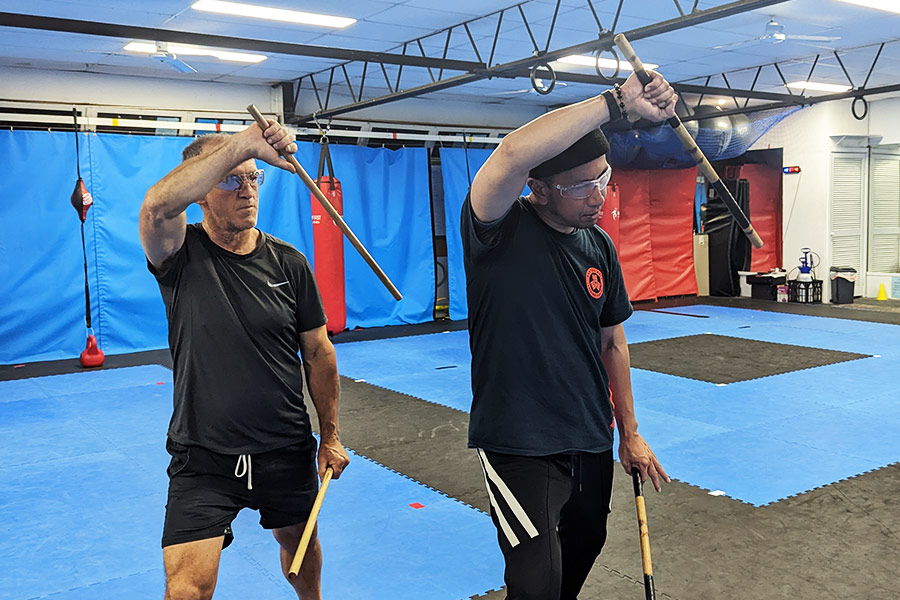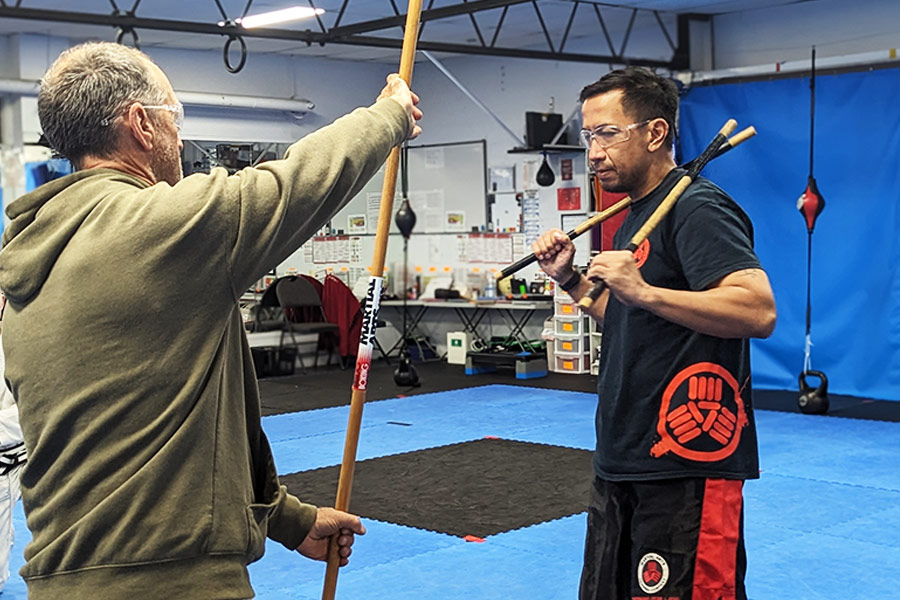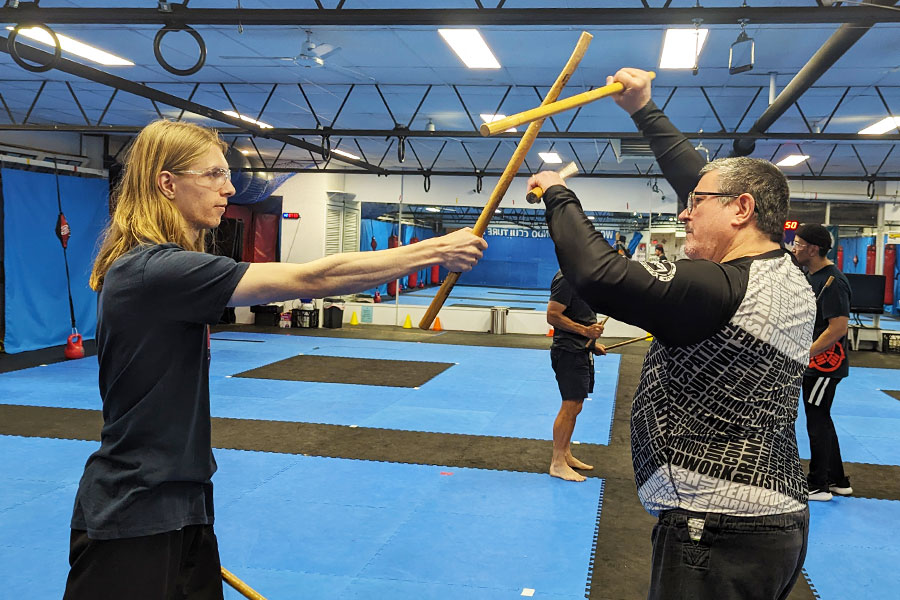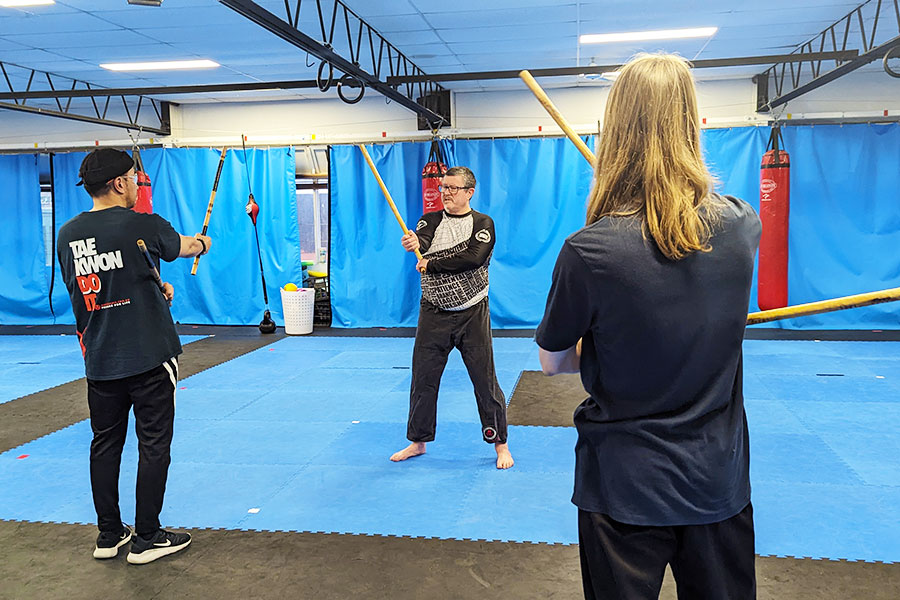Weapons Defense & Stick Fighting
What is Baston Stick Fighting?
Baston stick fighting, also known as Arnis, Eskrima, or Kali, originates from the Philippines and has a rich history that dates back centuries.
It evolved as a practical self-defence system developed by the Filipino people to protect themselves against invaders and opponents. The art incorporates indigenous Filipino martial arts, as well as influences from neighboring Southeast Asian countries and Spanish colonial rule.
With its focus on weapon-based combat using sticks, blades, and improvised weapons, Baston stick fighting emphasizes efficiency, adaptability, and practicality in real-life combat situations. Today, it is practiced and respected as a cultural treasure and a symbol of the martial heritage of the Philippines.
Stick Fighting (Baston) Curriculum
We teach fundamental stances, such as the ready stance and defensive positions, along with basic footwork patterns to develop balance, agility, and proper positioning during combat.
We introduce various stick strikes, such as angles 1 to 12 (representing different target areas), and blocks to develop coordination, accuracy, and power in striking and defending against attacks.
A proper flow is the instinctual ability to adapt to a confrontational situation naturally, no matter the range or weapon.
– Grandmaster Remy A. Presas, Father of Modern Arnis/Filipino Martial Art
Benefits of Baston (Stick Fighting)
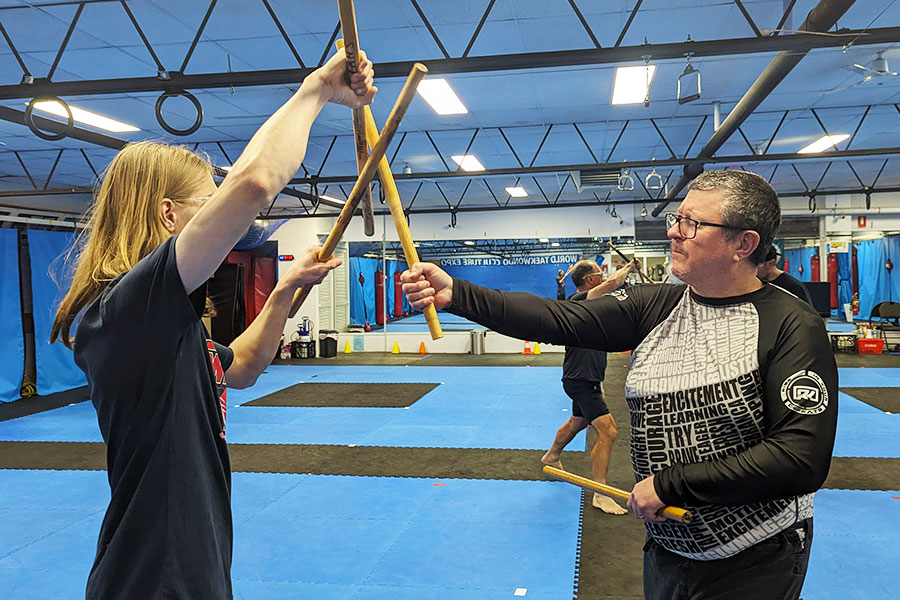
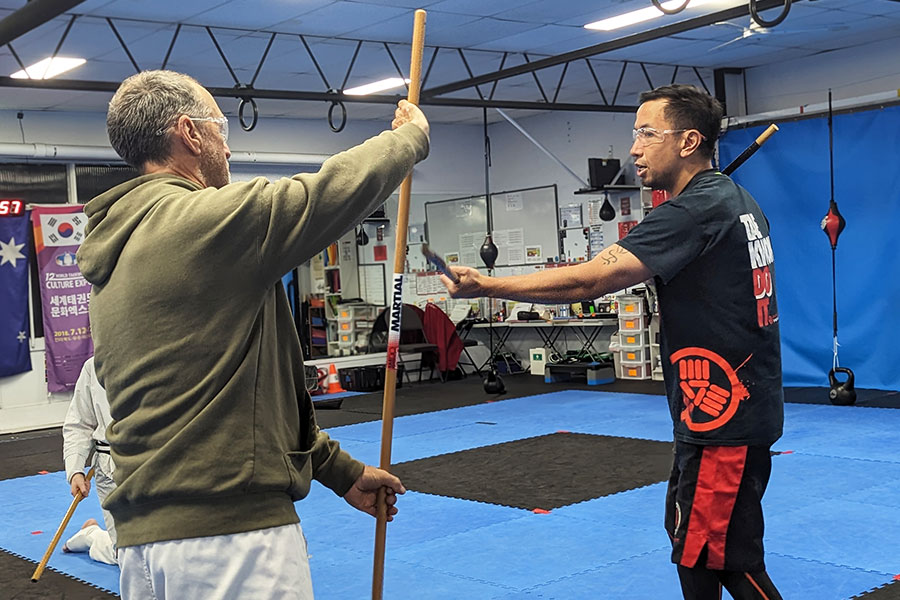
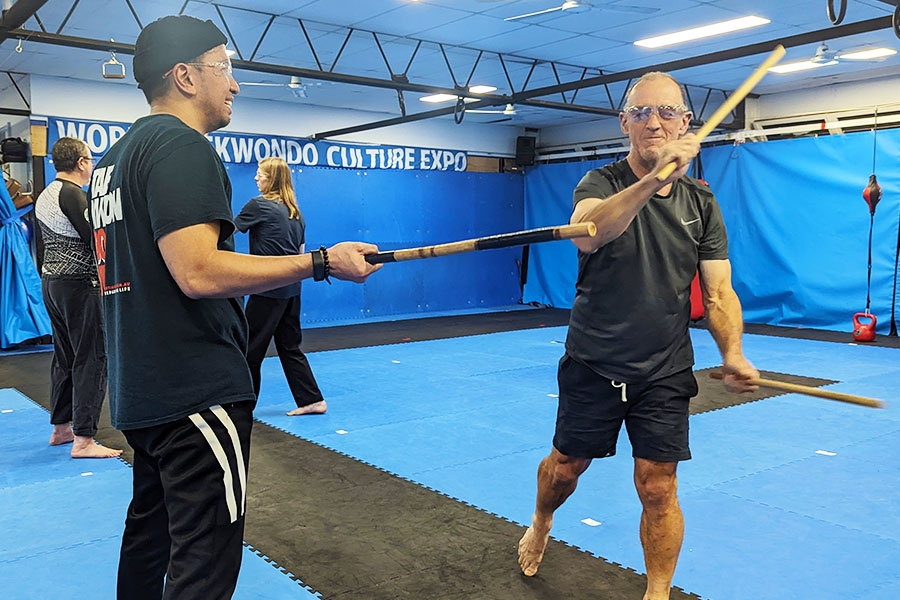
Frequently Asked Questions
Baston stick fighting is a traditionally Filipino martial art that involves using a single (solo) or pair (dublo) of rattan sticks for self-defence and combat.
The sticks are used to strike and block attacks from an opponent. It’s great for brain connectivity and helps improve students study habits and focus as it involves dual actions and reactions that utilize the left and right side of the brain.
No, Baston stick fighting is practised in many countries all around the world, including the United States, Canada, Australia, and Europe. It is commonly regarded as the best stick fighting method on the planet.
No, beginners are welcome in baston stick fighting classes. Instructors typically teach basic techniques and gradually build up to more advanced techniques as students progress through the 15 level syllabus.
Traditionally, yes. However, at MTC we do not have full contact with sticks. We do have specialised stick fighting to create a reality based street defence system that is effective and useful. We can and do train at full speed and contact with foam sticks full head and protective body gear.
As with any martial art or combat sport, there is a risk of injury in Baston stick fighting. Instructors emphasise safety at all times and train with protective equipment. Using proper techniques to minimise the risk of injury.
The benefits of practising Baston stick fighting include improved physical fitness, self-defence skills, self-confidence, coordination and discipline. It improves brain function like focus as well as hand eye coordination skills which improves ability in other sports.
The only equipment you need to practise baston stick fighting is a pair of rattan sticks, which we supply. You can use the club’s sticks and safety goggles during class.
Generally 8+ years.
Baston stick fighting can be used both for self-defence and in competition. There are many baston stick fighting tournaments and competitions held around the world.


